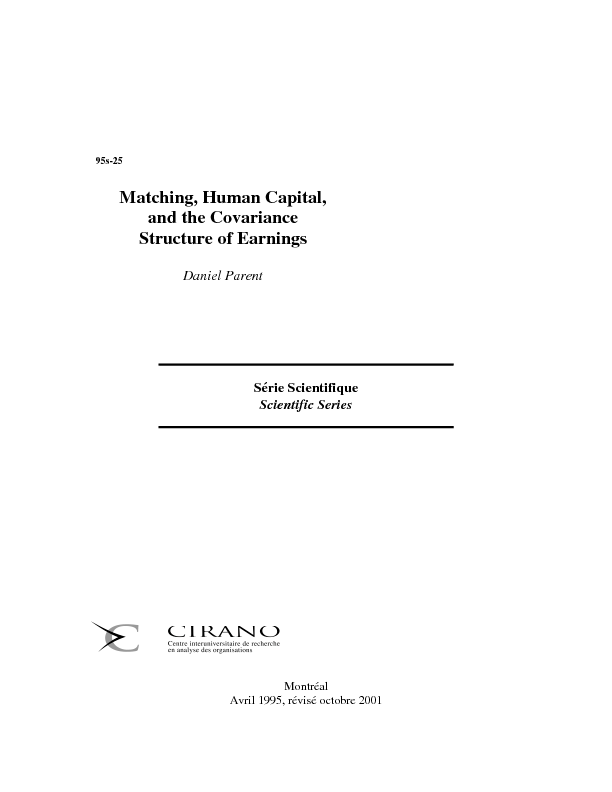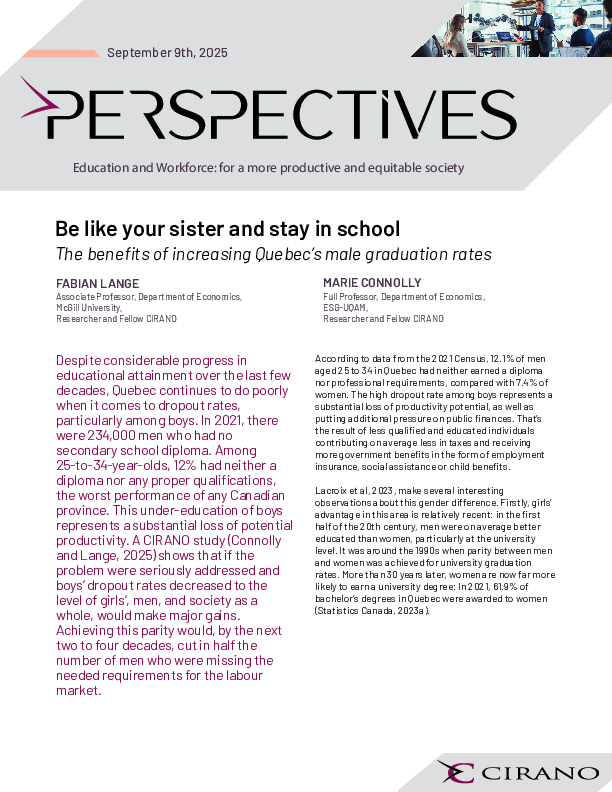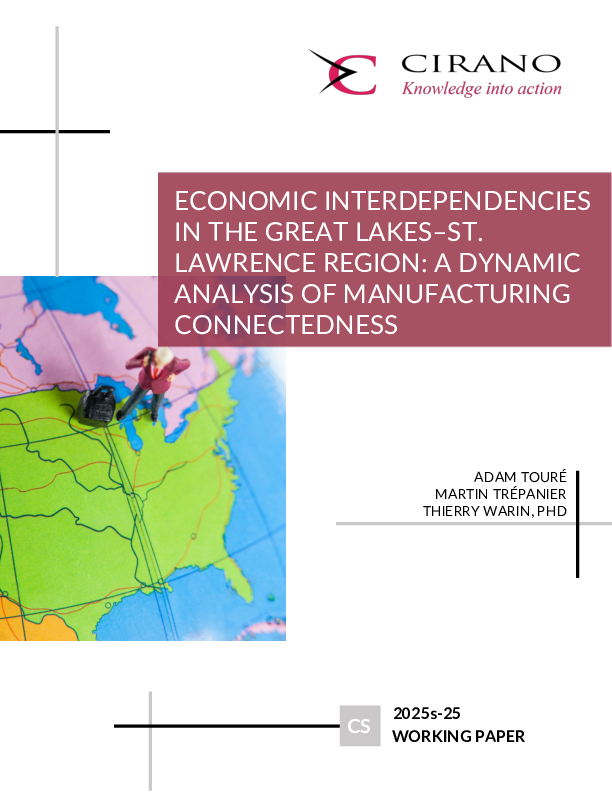Matching, Human Capital, and the Covariance Structure of Earnings
Using method of moments techniques (ref: Chamberlain (1984), Gallant and Jorgenson (1979)), this paper's objective is to test the predictions of the theory of job-matching and the theory of human capital pertaining to the covariance structure of residuals from a typical Mincer log earnings equation. The selection process implicit to job matching is such that we should observe a decrease in the contribution of the variance of the job-match component when we follow the workers as they acquire tenure in their job. Results are generally in agreement with these predicted patterns, especially in the case of more educated workers. On the other hand, if jobs are considered as pure experience goods, the predicted increase in the variance at the start of the employment relationship is not supported by the data, except perhaps for less educated workers. Turning next to human capital theory, the predicted trade-off between the job-specific intercept and slope parameters is strongly supported by the data, especially in the case of workers having at least a High School diploma.
[ - ]




